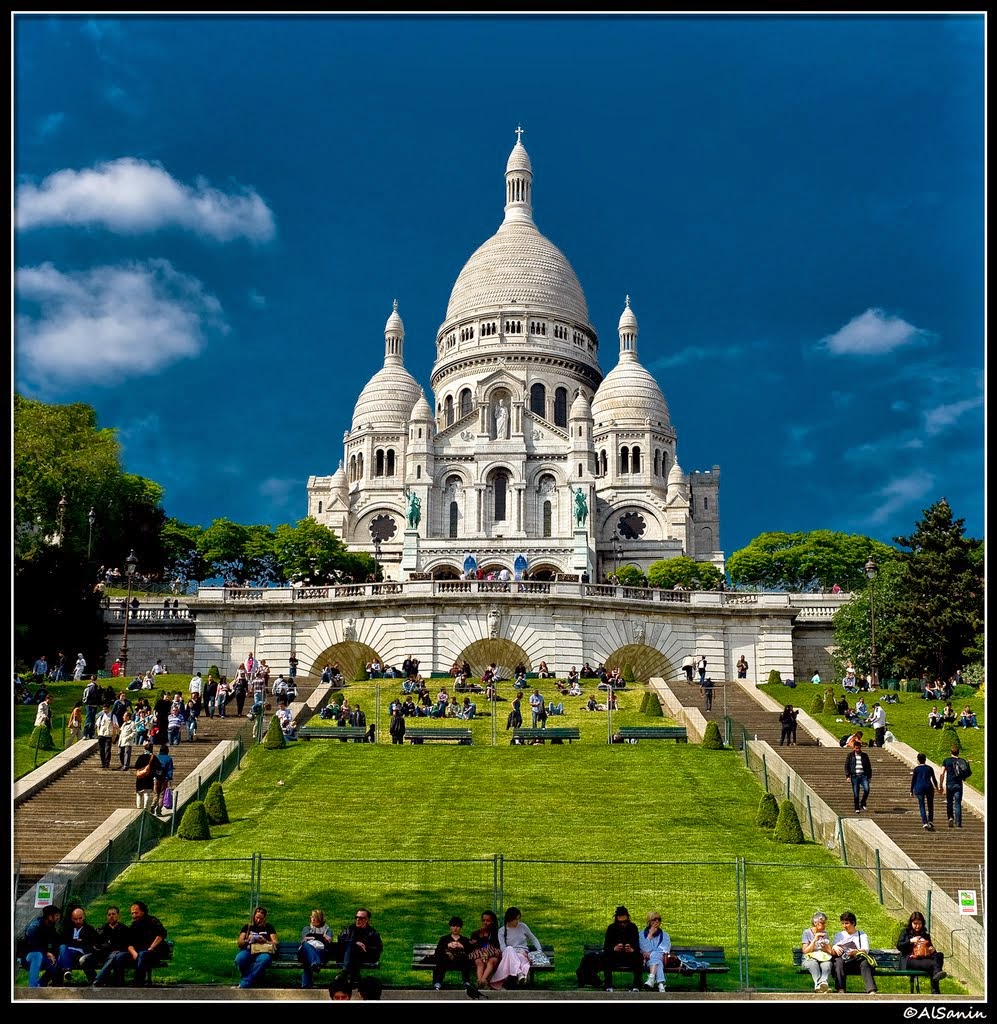Perched atop the highest point of Paris, the Sacré-Cœur Basilica (Basilica of the Sacred Heart) stands as a radiant landmark, its white domes and Romanesque-Byzantine architecture drawing millions of visitors each year. More than just a stunning architectural marvel, the Sacré-Cœur is a symbol of faith, repentance, and national unity in France, with a rich history intertwined with political upheaval, artistic expression, and spiritual devotion.
A History Forged in Turmoil
The story of the Sacré-Cœur begins in the aftermath of the Franco-Prussian War (1870-1871), a period of profound national trauma for France. The country suffered a crushing defeat, and Paris was besieged, leading to widespread hardship and social unrest. The Paris Commune, a radical socialist government, briefly seized control of the city in 1871, further deepening the sense of national crisis.
In this climate of despair, two prominent Frenchmen, Alexandre Legentil and Hubert Rohault de Fleury, made a vow to construct a church dedicated to the Sacred Heart of Jesus if France were spared from complete destruction. They believed that the nation’s sins and moral decline had contributed to its misfortunes, and that a gesture of repentance and faith could restore divine favor.
Their proposal gained traction among influential figures in the Catholic Church and the French government. The National Assembly officially approved the construction of the Sacré-Cœur Basilica in 1873, declaring it a national act of expiation. The choice of Montmartre as the site was deliberate. The hill, traditionally associated with Saint Denis, the patron saint of Paris, who was martyred there, also held symbolic significance as a place of pagan worship and revolutionary activity. By building the basilica on Montmartre, the project aimed to reclaim the site for religious purposes and symbolically purify the city.
Architecture: A Fusion of Styles
The design of the Sacré-Cœur Basilica was entrusted to Paul Abadie, who won a competition with his Romanesque-Byzantine proposal. Abadie’s design drew inspiration from various sources, including Romanesque cathedrals of southwestern France, Byzantine churches of the Eastern Roman Empire, and even elements of Italian Renaissance architecture.
The basilica’s most striking feature is its brilliant white color, achieved through the use of Château-Landon stone. This unique stone hardens and bleaches over time, ensuring that the Sacré-Cœur maintains its luminous appearance. The basilica’s plan is a Greek cross, with four arms of equal length, symbolizing the universality of Christ’s love. Above the crossing rises the grand central dome, reaching a height of 83 meters (272 feet), offering panoramic views of Paris.
The basilica’s façade is dominated by three arches, flanked by equestrian statues of Saint Louis IX, the Crusader king, and Saint Joan of Arc, the national heroine. These statues represent the historical connection between the French monarchy and the Catholic Church.
Inside the Basilica: A Sanctuary of Art and Spirituality
Stepping inside the Sacré-Cœur is an awe-inspiring experience. The interior is bathed in soft light filtering through stained glass windows, creating a serene and contemplative atmosphere. The basilica’s vastness is immediately apparent, with its high vaulted ceilings and intricate mosaics.
The centerpiece of the interior is the apse mosaic, one of the largest in the world, depicting Christ with outstretched arms, offering his Sacred Heart to humanity. The mosaic is a masterpiece of Byzantine-inspired art, with vibrant colors and intricate details that convey a sense of divine majesty.
The basilica also houses several chapels dedicated to various saints and religious figures. These chapels are adorned with sculptures, paintings, and stained glass windows, each contributing to the basilica’s rich artistic heritage.
The Crypt: A Subterranean Sanctuary
Beneath the main basilica lies a vast crypt, mirroring the layout of the church above. The crypt contains chapels dedicated to the Virgin Mary and other saints, as well as the tombs of several prominent figures associated with the basilica’s construction.
The crypt is a place of quiet reflection and prayer, offering a respite from the bustling crowds above. Its subdued lighting and somber atmosphere create a sense of reverence and contemplation.
A Place of Pilgrimage and Tourism
Since its completion in 1914, the Sacré-Cœur Basilica has become a major pilgrimage site and a popular tourist destination. Millions of visitors from around the world come to admire its architecture, appreciate its art, and experience its spiritual atmosphere.
The basilica offers regular masses and prayer services, attracting devout Catholics who seek solace and inspiration. It also hosts concerts and cultural events, showcasing its role as a center of artistic expression.
Visitors can climb to the top of the dome for breathtaking panoramic views of Paris. From this vantage point, one can see the Eiffel Tower, the Louvre Museum, Notre-Dame Cathedral, and other iconic landmarks.
Controversies and Criticisms
Despite its popularity, the Sacré-Cœur Basilica has faced controversies and criticisms throughout its history. Some have criticized its construction as a symbol of conservative, monarchist, and anti-republican sentiments, given its origins in the aftermath of the Paris Commune. Others have questioned the choice of Montmartre as the site, arguing that it was an attempt to erase the memory of the Commune.
However, the basilica has also been defended as a symbol of national unity and reconciliation, a place where people of different backgrounds can come together in prayer and reflection. Its artistic and architectural merits are widely recognized, and it has become an integral part of the Parisian landscape.
Visiting the Sacré-Cœur Basilica
The Sacré-Cœur Basilica is easily accessible by metro, bus, or funicular. It is open to the public every day, and admission is free. However, there is a fee to climb to the top of the dome.
Visitors are advised to dress respectfully when entering the basilica. Photography is allowed, but flash photography is prohibited. The basilica can be crowded, especially during peak season, so it is best to arrive early in the morning or late in the afternoon to avoid the crowds.
Conclusion
The Sacré-Cœur Basilica is more than just a beautiful building; it is a symbol of faith, art, and history. Its construction was born out of a period of national crisis, and it has since become a place of pilgrimage, tourism, and cultural expression. Whether one is drawn to its architecture, its art, or its spiritual atmosphere, the Sacré-Cœur Basilica is a must-see destination for anyone visiting Paris. It stands as a testament to the enduring power of faith and the transformative power of art. Its gleaming white silhouette against the Parisian sky serves as a constant reminder of hope, reconciliation, and the enduring spirit of the city.

